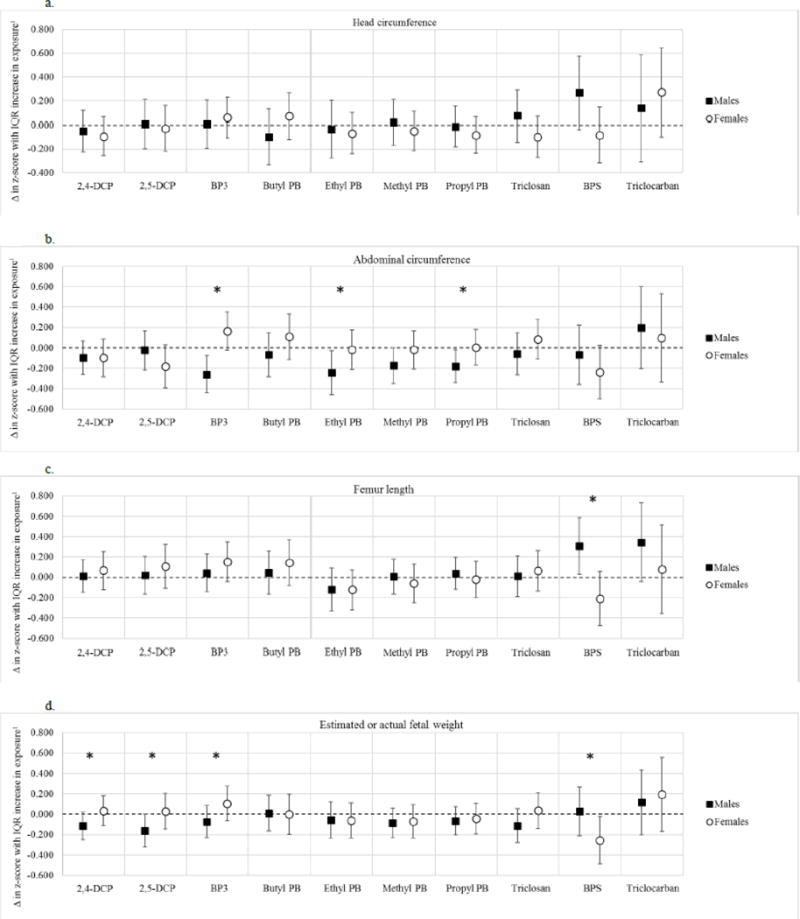Figure 1.

a–d. Adjusted change (Δ) in fetal growth z-score in association with an interquartile (IQR) range difference in specific gravity-corrected urinary exposure biomarker concentrations1 for the following parameters: A) Head circumference; B) Abdominal circumference; C) Femur length; and D) Estimated fetal weight combined with birth weight.
Footnote: Note: For BPS and Triclocarban, results are in association with ever vs. never detection at visits 1–3. *Denotes interaction p values <0.20. Results from linear mixed effects models for males had the following sample sizes: models of head and abdominal circumference or femur length, n=133 participants and 191 observations; models of estimated fetal weight combined with birth weight, n=205 participants and 396 observations. Results from linear mixed effects models for females had the following sample sizes: models of head and abdominal circumference and femur length, n=179 participants and 261 observations; models of estimated fetal weight combined with birth weight, n=254 participants and 517 observations. Models weighted for study design, include subject specific random intercepts and slopes for gestational age at ultrasound measurement, and are adjusted for maternal age, race/ethnicity, pre-pregnancy body mass index, and health insurance provider. Abbreviations: 2,4-DCP, 2,4-dichlorophenol; 2,5-DCP, 2,5-dichlorophenol; BP3, benzophenone-3; PB, paraben; BPS, bisphenol-S.
